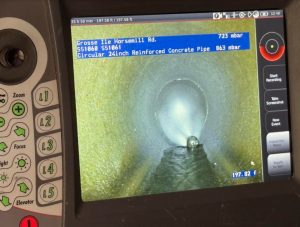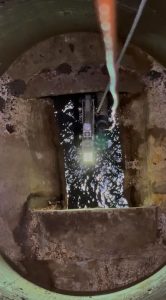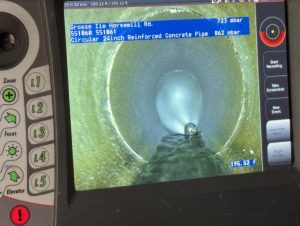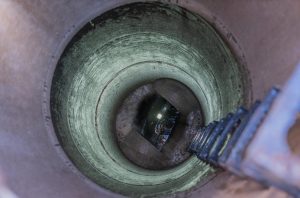Sewer systems are often out of sight, out of mind—until there’s a problem. At ART, our expert teams work tirelessly to keep these underground systems running smoothly using an advanced technique known as sewer jetting.

Sewer jetting is a trenchless method that uses high-pressure water jets to clear blockages and clean sewer pipes. A combo truck, equipped with both a vacuum and jetting rod, works by pushing a high-pressure nozzle down into the sewer line. The water jet cuts through stubborn root balls, calcium buildup from hot water, grease, and even those troublesome “flushable” wipes, which when combined with solidified grease, form what’s known as a “fatberg.”
After the sewer has been cleared, a camera follows the jetting nozzle to survey the cleaned-out pipe, ensuring it is in top condition. This thorough cleaning approach not only clears blockages but also extends the life of the pipe, keeping it in good shape for years to come.
What are the Benefits of Sewer Jetting?

Unlike traditional methods of clearing sewer lines, sewer jetting offers several key advantages:
No digging required: One of the biggest benefits of sewer jetting is that it eliminates the need to dig up roads, lawns, or properties. This makes it a faster, less disruptive process for homeowners and businesses alike.
Faster cleanup: On average, a 350-foot section of pipe can be cleaned and televised in just an hour. Compared to mechanical methods, which often require digging and longer clean-up times, sewer jetting is both efficient and effective.
Versatile application: Sewer jetting works on main sewer lines, and it’s effective in removing a range of blockages from root balls and grease buildup to hard calcium deposits. This makes it a versatile solution for municipalities, businesses, and homeowners alike.
Signs That Sewer Jetting is Needed

Although sewer jetting is often used for regular maintenance, there are several signs that your sewer system might need immediate attention:
Backups: If your sewer is backing up, either inside your home or in your yard, it’s a sure sign there’s a blockage in the line.
Wet manholes: If the grass around a manhole is damp or water is leaking into lower areas, it could indicate a sewer line issue that needs attention.
Manholes filled with water: When a manhole is opened, you should be able to see the bottom. If it’s full of water, there’s likely a backup somewhere down the line.
How Often Should Sewer Jetting be Done?

For homeowners, sewer jetting should be part of routine maintenance every three to five years—similar to maintaining a septic system. Restaurants and other businesses that frequently deal with grease should consider jetting every couple of years to prevent costly blockages.
Sewer jetting doesn’t just fix existing problems; it helps prevent future ones. Without proper sewer maintenance, you could end up with sewage backing up into your home or yard, leading to costly repairs, damage to your basement or business, and major inconveniences. Regular sewer jetting can prevent these issues from occurring in the first place.
Sewer jetting is a critical service that prevents future blockages, saves money on costly repairs, and keeps your sewer system running smoothly. If you want to stay ahead of potential problems, trust the experts at ART to handle your sewer maintenance needs. If you are interested in learning more about our professional, timely preventative maintenance services in Michigan, Indiana, and Ohio, or have questions about the equipment we use for sewer lining cleaning and CCTV Inspections, contact us via our online form or call 419-636-2684.
